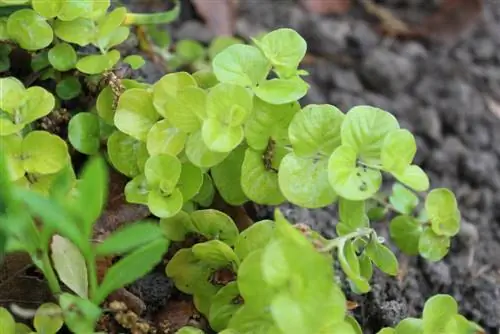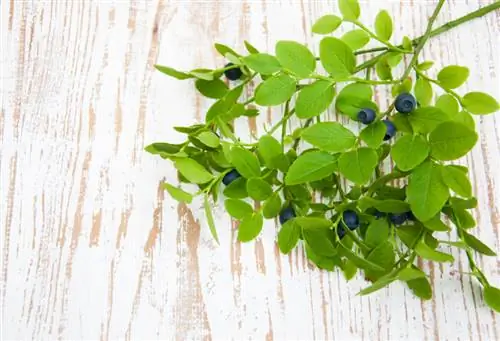- Author admin [email protected].
- Public 2023-12-16 16:46.
- Last modified 2025-01-23 11:22.
The pennywort blooms profusely, but many of the yellow flowers are sterile. Seed capsules rarely ripen. Obtaining new plants by sowing is therefore not a horticultural practice. But that's also because we have three other, perfectly functioning ways of propagation available to us.

How can pennywort be propagated successfully?
The pennywort can be propagated by three common methods: separating runners, dividing the plant and rooting cuttings. Each method requires careful attention to ensure he althy new plants.
The three common propagation methods
- Separate runners
- Divide a plant
- Rooting cuttings
Separate runners
The pennywort, also known as coin herb, is a typical ground cover that conquers the space around it with its long shoots. If its shoots come into contact with the earth, they form roots. You can separate such a runner from the mother plant and then dig it up including the roots. Plant it in its intended location and water it well.
Tip
Separating rooted runners from the mother plant is not just for propagation. In this way, the plant is also prevented from spreading excessively.
Share pennywort plant
With good care, every penny plant will transform into a lush specimen, regardless of whether it grows outside by the pond, in a balcony box or underwater in the aquarium. You can easily get two new plants from such a pennywort:
- Dig up plants carefully
- Shake off the earth
- Cut root ball into two or more pieces
- use a sharp, clean knife
- Roots and leaves must remain on each piece
- plant and water each section separately
Propagation via cuttings
As a hardy plant, the pennywort will delight us with its existence for many years. But to prevent its growth from getting out of hand over the years, it needs to be cut regularly. Cutting material can be collected specifically for propagation.
- Cut 5-10 cm long top cuttings from young shoots, each below a node. The head cuttings should have leaves, but not flowers or buds.
- Remove the lower leaves of the cuttings.
- Fill small pots with nutrient-poor soil.
- Insert one cutting per pot.
- Wet the soil and place a clear plastic bag over it.
- Place the pots in a warm and bright place.
- Keep the soil consistently moist and ventilate the covers regularly.
- As soon as the first leaves appear, you should repot the young plants into larger pots as soon as possible.






